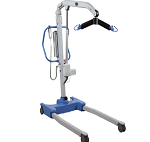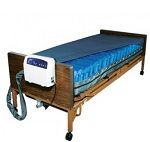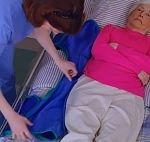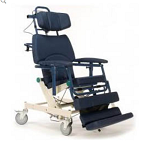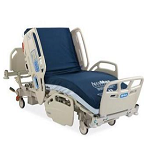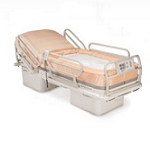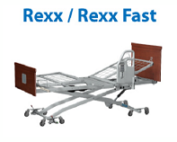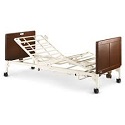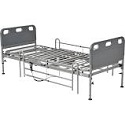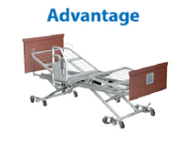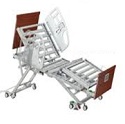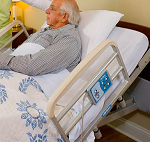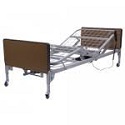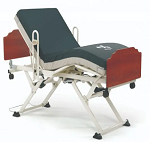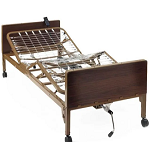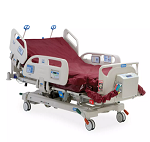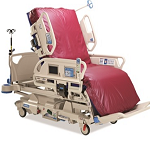Assisting with positioning and transferring homecare patients
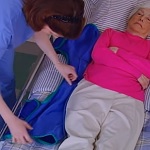 On a basic level, an elderly individual living alone needs to be able to move from place to place without too much risk. For instance, a senior will need to move from the bed to the bathroom to take care of personal hygiene needs. Then, he or she may need to move from the bathroom to the kitchen for some food, and off to the living room to sit on the couch. Transferring service provides a senior the ability to have some help from a caregiver when trying to get from one place to the next.
On a basic level, an elderly individual living alone needs to be able to move from place to place without too much risk. For instance, a senior will need to move from the bed to the bathroom to take care of personal hygiene needs. Then, he or she may need to move from the bathroom to the kitchen for some food, and off to the living room to sit on the couch. Transferring service provides a senior the ability to have some help from a caregiver when trying to get from one place to the next.
Demonstration Videos
SPECIFICATIONS
Moving a patient from bed to a wheelchair
If the patient cannot use at least one leg, you will need to use a lift to transfer the patient.
Preparation
Think through the steps before you act, and get help if you need it. If you are not able to support the patient by yourself, you could injure yourself and the patient.
Make sure any loose rugs are out of the way to prevent slipping. You may want to put non-skid socks or shoes on the patient’s feet if the patient needs to step onto a slippery surface.
The following steps should be followed:
- Explain the steps to the patient.
- Park the wheelchair next to the bed, close to you.
- Put the brakes on and move the footrests out of the way.
Getting a Patient Ready to Transfer
Before transferring into the wheelchair, the patient must be sitting.
Allow the patient to sit for a few moments, in case the patient feels dizzy when first sitting up.
The following steps should be followed when getting ready to transfer a patient:
- To get the patient into a seated position, roll the patient onto the same side as the wheelchair.
- Put one of your arms under the patient’s shoulders and one behind the knees. Bend your knees.
- Swing the patient’s feet off the edge of the bed and use the momentum to help the patient into a sitting position.
- Move the patient to the edge of the bed and lower the bed so the patient’s feet are touching the ground.
Pivot Turn
If you have a gait belt, place it on the patient to help you get a grip during the transfer. During the turn, the patient can either hold onto you or reach for the wheelchair.
Stand as close as you can to the patient, reach around the chest, and lock your hands behind the patient or grab the gait belt.
The following steps should be followed:
- Place the patient’s outside leg (the one farthest from the wheelchair) between your knees for support. Bend your knees and keep your back straight.
- Count to three and slowly stand up. Use your legs to lift.
- At the same time, the patient should place their hands by their sides and help push off the bed.
- The patient should help support their weight on their good leg during the transfer.
- Pivot towards the wheelchair, moving your feet so your back is aligned with your hips.
- Once the patient’s legs are touching the seat of the wheelchair, bend your knees to lower the patient into the seat. At the same time, ask the patient to reach for the wheelchair armrest.
If the patient starts to fall during the transfer, lower the person to the nearest flat surface, bed, chair or floor.
Alternative Names
Pivot turn; Transfer from bed to wheelchair
References
American Red Cross. Assisting with positioning and transferring. In: American Red Cross. American Red Cross Nurse Assistant Training Textbook. 3rd ed. American National Red Cross; 2013:chap 12.
Smith SF, Duell DJ, Martin BC, Gonzalez L, Aebersold M. Body mechanics and positioning. In: Smith SF, Duell DJ, Martin BC, Gonzalez L, Aebersold M, eds. Clinical Nursing Skills: Basic to Advanced Skills. 9th ed. New York, NY: Pearson; 2017:chap 12.
Timby BK. Assisting with basic needs. In: Timby BK, ed. Fundamentals of nursing skills and concepts. 10th ed. Philadelphia, PA: Wolters Kluwer Health: Lippin
USER MANUAL
FREQUENTLY ASKED QUESTIONS
Helpful Hints
Transferring and Positioning
Transferring and Positioning Makes Life More Comfortable
As we age, moving around the house can get more difficult. If you have a senior loved one who struggles to move around properly, yet still wants to live on their own at home, transferring and positioning service from Comfort Keepers may help.
This essential service will physically assist seniors in moving from one place to another safely, reducing the risk of falls and improving the overall quality of life.
From Here to There
On a basic level, an elderly individual living alone needs to be able to move from place to place without too much risk. For instance, a senior will need to move from the bed to the bathroom to take care of personal hygiene needs. Then, he or she may need to move from the bathroom to the kitchen for some food, and off to the living room to sit on the couch. Transferring service provides a senior the ability to have some help from a caregiver when trying to get from one place to the next.
There are many benefits to having assistance with transferring from one spot in the house to another, including:
- Less risk associated with those movements with trained help and a steady arm.
- Less temptation to skip out on some of these tasks, like getting to the bathroom to bathe or getting to the kitchen for some food. Since the necessary help will be on hand, it will be easy to go ahead and keep up with these tasks.
- Comfort in having a companion to help with these chores, not only in knowing that they are easier to complete, but also just in having someone to talk to and socialize.
Stay Away from Bed Sores
Bed sores are caused by spending extended periods of time in bed, especially among those who have trouble repositioning themselves as they lay. Bed sores are a significant risk for a senior who spends most of the day sitting or lying down.
A caregiver who has been trained in positioning services can help to keep a senior moving within the bed during the day, avoiding bed sores that may become painful or infected.
Home care is important for many elderly individuals who choose to remain in their homes rather than move to an assisted living facility. At Comfort Keepers, we focus on helping these seniors to achieve the best possible quality of life through things like transferring and positioning, incontinence care, hygiene help, and more. To get started on developing a plan for your elderly loved one, reach out today.
RELATED ITEMS
Hoyer Presence Multi-Purpose Patient Lift with Powered Base
Hoyer Presence Multi-Purpose Patient Lift with Powered Base Designed for versatility, this lightweight mobile lift features a Read more...
Drive Medical Med Aire Alternating Pressure Low Air Loss Mattress
Drive Medical Med Aire Alternating Pressure Low Air Loss Mattress Drive Medical's low air loss mattress Read more...
Assisting with positioning and transferring homecare patients
Assisting with positioning and transferring homecare patients On a basic level, an elderly individual living alone needs to be Read more...
Barton H-250 Convertible Chair
H-250 Convertible Chair The H-250 Convertible Chair is a unique device that easily converts from a stretcher to Read more...
Hill-Rom® CareAssist® ES Medical Bed Instructions
Hill-Rom® CareAssist® ES Medical Bed This bed provides easy to use solutions to help caregivers manage patient Read more...
Clinitron® Air Fluidized Therapy bed Instructions
Clinitron Air Fluidized Therapy Bed A bed specially designed for people with pressure ulcers, the Clinitron bed utilizes "air fluidized therapy," Read more...
Span America REXX Fast Bed Instructions
Span America Rexx bed - Q-Series Span America Rexx bed - Q-Series adjusts vertically with virtually Read more...
Invacare® G-Series Bed Instructions
Invacare's G-Series beds These beds deliver new and innovative features that further meet patients needs. The G-Series bed Read more...
Competitor II Semi-Electric Bed Instructions
Competitor II Semi Electric Height Adjustable Bed Hand Crank adjustable bed height features a NEW positive fit hexagonal crank Read more...
Span America Q-Series Instructions
Advantage Bed, Span America Span America Advantage bed with Q-Series advanced features such as mobility at Read more...
Span America – Encore™ Instructions
Encore®, Span America The Encore® is our premium bed, providing measurably improved levels of care and Read more...
Hill-Rom, 100 Low Bed Instructions
The Hillrom™ 100 Low The Hillrom™ 100 Low bed for extended care communities combines warmth and style with essential Read more...
Patriot LX Homecare Bed Instructions
Patriot LX Full Electric Bed Robust steel grid deck sleep surface provides superior mattress support and easy to Read more...
Carroll CS3 Hi-Low Bed Instructions
Carroll CS Series™ CS7™ Bed The innovative Carroll CS Series™ CS7™ Bed, designed with an Auto Contour feature Read more...
Medline Basic Semi-Electric Bed Instructions
Medline Basic Bed Light beds are easy to transport with a foot section that weighs just 42 Read more...
Compella™ bariatric bed – Hill Rom
Compella™ bariatric bed The bed anticipates and helps overcome critical challenges associated with bariatric care, allowing caregivers Read more...
The Progressa® bed system – Hill Rom
Progressa™ bed system for the ICU The Progressa™ bed system responds to the evolving needs of caregivers, patients Read more...


